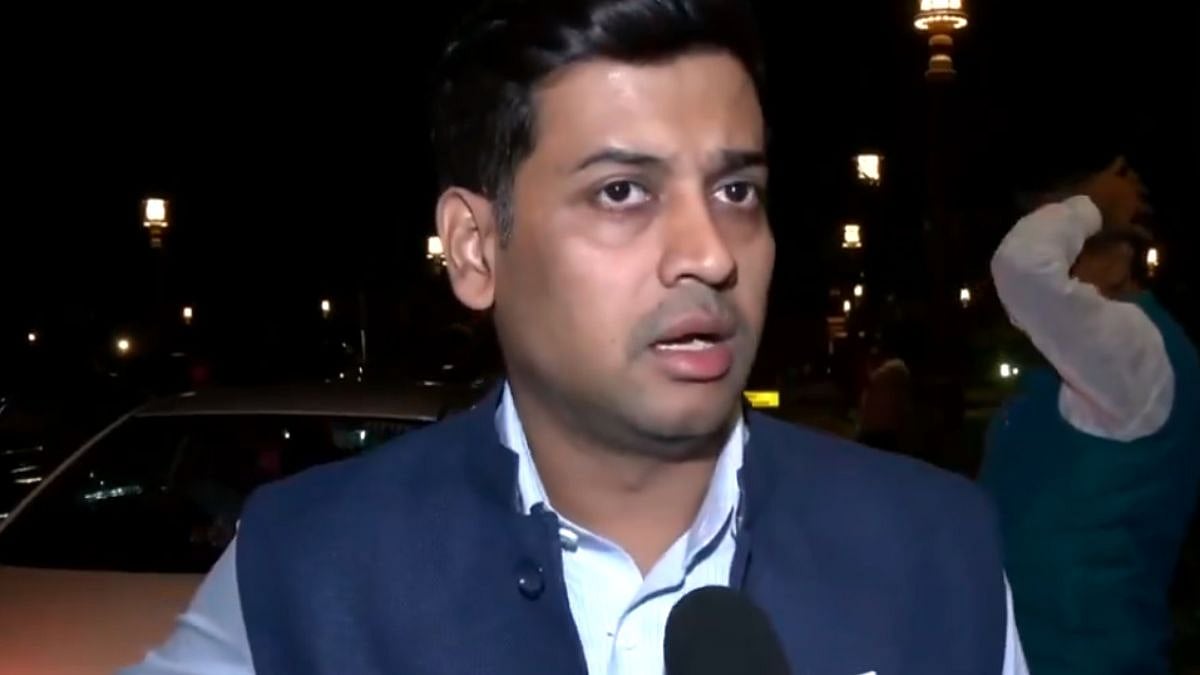International Mother Language Day is celebrated on February 21 every year. It made us wonder that while we speak so much about mother tongue, why just the mother tongue, why not father tongue? What happens when parents are from different linguistic backgrounds. Which language do their children pick up? Father’s or mother’s? There’s no straightjacket formula, and like genetics, linguistic traits could be either dominant or recessive; and the child may choose the one to which he has greater exposure while growing up, it could be strategised by the parents or decided by the child, quite involuntarily.
Noida-based Sandip Biswal and Purnima Sapru, who hail from different linguistic backgrounds, found that raising a multilingual child came with unique challenges and opportunities. “On one hand, there was the desire to pass on cultural heritage and language proficiency to our offspring. On the other, there was the practicality of ensuring effective communication and integration into the broader community, including family members on either side,” says Sapru, whose mother tongue is Kashmiri but speaks Hindi and English. Their son, Arhaan, 14, took to Oriya, his father’s tongue like a fish takes to water (thanks to greater exposure to the language in his early years), but he also enjoys conversing in Kashmiri with his maternal side while being fluent in English, Hindi and French simultaneously.
Frankly speaking
Navigating this delicate balance required careful consideration and open communication between the parents, Sapru and Biswal. “We had decided which language to prioritise, how to maintain consistency in language exposure, and how to address potential language delays or confusion,” adds Sapru, who succeeded in maintaining linguistic diversity using the “one parent, one language (OPOL)” strategy, where each parent exclusively speaks their native language to the child.
This approach helps children develop fluency in both languages from an early age. However, it can also lead to challenges in maintaining balanced proficiency and may require additional support in reinforcing the minority language. The OPOL, however, worked in the case of Sapru.
The other side
Others, like Patna-based blogger Deepa Kotturi Sehara, a native of Andhra Pradesh, is fluent in her mother tongue, Telugu, apart from being proficient in English, Hindi and Malayalam. Hailing from the Hindi heartland, her husband, Divesh Sehara, speaks Hindi, English and Malayalam. While raising their child, Milind Dev, 16, the Sehara couple adopted a singular approach, using Hindi in daily interactions with him in his early years. “We feared using Telugu, Malayalam and Hindi interchangeably at home with him. We knew this approach could foster greater flexibility and adaptability in my child’s language skills. However, it could have also resulted in mixing or code-switching between languages, impacting his language development. So, we stuck to his father’s tongue, Hindi,” says Sehara. In addition to speaking to her child in a designated language at home, Deepa used TV shows, movies and podcasts to help Milind get even more immersed in the languages and cultures and stay connected to his varied linguistic roots. Growing up, Milind has gained fluency in other languages, which adds to his linguistic strength.
Varied approach
The at-home language teaching method OPOL worked in Bengaluru-based techie Seema Singh Sharma’s case as well. Each parent spoke a different language to their children — Seema and her elder brother. “My Malayalam-speaking mother and Oriya-speaking father used this standard method to maximise our exposure to two languages simultaneously on a quest to achieve bilingualism. It worked well for us. We spoke these languages at home, Bangla with neighbours, English and Hindi at school,” says Sharma, who is married to a native Punjabi speaker, Vaman, proficient in Hindi and English. The Sharma couple raised their child Akshal, 16, with adequate exposure to his mother’s and father’s tongues.
However, most multilingual parents keep majority of interactions with their child limited to their common tongues — Hindi, followed by English.
“Language skills are developed by constant exposure, and since we lived abroad during his growing up years, we chose a language we felt more comfortable speaking at home, which happened to be Hindi, and then English,” explains Sharma.
World Wide View
Ultimately, the key lies in creating a nurturing environment where children feel encouraged to explore and embrace both majority and minority languages without feeling pressured or overwhelmed. Atlanta-based author Rashmi Bora Das and her husband Anjan Das fostered a positive attitude towards language learning and celebrating cultural diversity while raising their son, Ayan. “Our common tongue is Assamese, but we are fluent in Hindi and English. So, we made it a point to speak in Assamese with Ayan at home, and empowered him to navigate the complexities of a multilingual world with confidence and pride by encouraging him to learn Spanish in school,” states Das. Ayan is currently learning German with an online language learning tool, Duolingo.
Minding the language
However, language exposure must not be confined to everyday conversations, dinner table discussions, or structured lessons alone. “Parents must ensure to engage in freewheeling conversations, jokes, reading, singing, and playing in the target language to immerse every aspect of child’s life in proper language exposure,” emphasises Dr Teena Goyal, a paediatrician. This, she says, will encourage child’s imagination to roam freely and can significantly benefit their development, especially if they have the appropriate vocabulary because listening to stories, reading together, singing fun songs, and playing imaginative games can all contribute to building a broader vocabulary.
A child’s all-around development depends mainly on their understanding of reading, writing, and talking to different people. Das highlights the advantages of having a good command over one’s mother or father’s tongue. “I believe one can express their emotions and feelings to the utmost in one’s native tongue. Conversing in one’s tongue paves the way for bonding with many people. On the cultural spectrum, knowing one’s mother’s or father’s tongue is a big bonus in understanding and appreciating the culture and heritage of the place where one’s roots belong," Das concludes.














